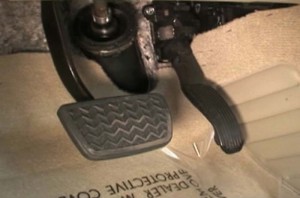
Have a sticky accelerator or some other problem with a "runaway Toyota"? The maker's new SMART team will be in touch, it claims, within 24 hours.
As many as 200 Toyota engineers have been put on call and will be poised to respond to any customer reporting a problem with a runaway car, the maker says.
Any report of sudden acceleration will be dealt with in less than 24 hours by the new Swift Market Analysis Response Team, or SMART, according to Toyota, with engineers dispatched to examine the vehicle to see what might have caused the problem. It’s the latest step by the Japanese maker, which is struggling to understand why so many owners have reported runaway vehicles, some even after their cars, trucks and crossovers have been reparied in accordance with two Toyota recalls.
“There has been a great deal of confusion, speculation and misinformation about unintended acceleration in the past several weeks,” declared Steve St. Angelo, who was recently named Toyota’s North American quality czar. “We believe judgments should be based on reliable evidence, and our SMART business process is there to help provide information upon which such judgments can be made.”
In a release, St. Angelo pointed to two recent cases, one in San Diego, the other in upstate New York, in which it appears the Toyota vehicles likely weren’t at fault. There is some evidence to suggest the California case was either a hoax or driver error, while the East Coast incident was likely the result of a driver confusing the brake and accelerator pedals.
But there are still 100s of additional reports of sudden acceleration which cannot be so easily dismissed. And the most concerning involve dozens of complaints from owners who have already undergone repairs called for by one or both of the Toyota recalls.
The first, announced last October, is designed to prevent loose floor mats from inadvertently jamming accelerator pedals. That problem is believed to have caused numerous accidents, including one, last August, in which a California Highway Patrol officer and three family members were killed in a fiery crash. The second recall was announced, this past January, to deal with potentially sticky throttles.
In all, Toyota has recalled more than 8 million vehicles due to the various problems, including not only the sudden acceleration issue but for such things as faulty brakes in the 2010 Toyota Prius, and excessive corrosion with Tundra pickups that can lead to brake failure.
St. Angelo noted the maker will continue to work with federal safety regulators, who are also trying to get a better understanding of what may be wrong with Toyota products. The maker has repeatedly denied allegations of problems with its electronic vehicle control technology.
Late last month, the National Highway Traffic Safety Administration announced it would partner with NASA and the National Academy of Sciences in a pair of research project designed to see if there are, in fact, additional problems not yet covered by the Toyota sudden acceleration recalls.
The U.S. Department of Transportation, meanwhile, has levied fines of $16.4 million against Toyota for failing to notify government regulators of the sticky accelerator problem within the mandated time period. Internal documents supplied to the government suggest the automaker may have known of the problem as far back as June 2009. Additional documents show that there was an ongoing debate between Toyota officials in the U.S. and Japan over how to deal with the problem.
The maker has not yet said if it will pay the fine or appeal.
